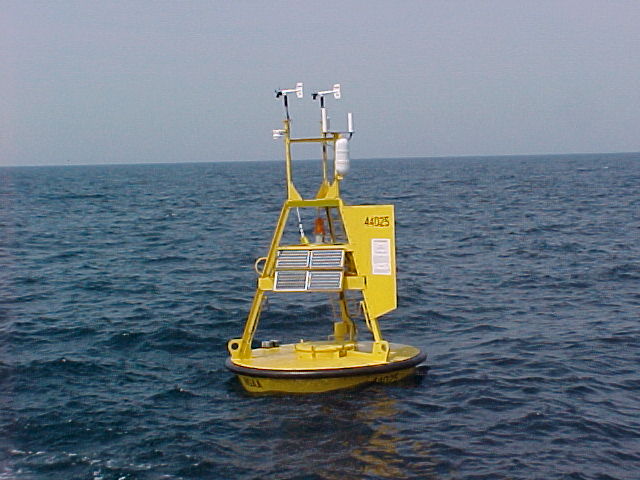Dial-A-Buoy (Not Just Buoy Data!)

3 Meter Discus Buoy
The National Data Buoy Center is a great resource for meteorological and oceanographic data across North America and many regions of the world. Most of NDBC’s users find the website most convenient and reliable. An average of over 2 million users have accessed NDBC’s website on a daily basis since April ’09. Despite further technology advancements for online mobile users, the majority of the population still does not have the capability of internet use while on-the-go (or at least not the most convenient method). This is where NDBC’s Dial-A-Buoy becomes an attractive alternative to accessing corresponding meteorological/oceanographic data. The Dial-A-Buoy Hotline (1-888-701-8992) can be called for many types of data and not just from buoys! Almost any station that can be found on the NDBC website can be accessed; excluding TAO (El Nino buoys), DART (Tsunami buoys), MMS ADCP (Deep Ocean Current data from Oil/Gas platforms), NERRS’ Water Quality stations and PIRATA buoys. Most of the data on NDBC’s website are found on Dial-A-Buoy, including coastal stations like NDBC’s Coastal Marine Automated Network (CMAN) stations, National Ocean Service (NOS), COMPS, National Weather Service stations and NERRS stations, to name a few major programs. Dial-A-Buoy also includes: SCRIPPS buoy network (displaying only oceanographic data), international buoys (owners like France, Canada, Ireland/UK), traditional drifting buoys (by Shell, NOAA and Canada), the Long Island Sound Ferry (One of three ferries with proper instrumentation travel from port to port across the Long Island Sound. From Bridgeport, CT to Port Jefferson, NY, the ferry travels a route with 8 points where data is recorded along the way) and also a test station OSTF1 at the National Data Buoy Center at Stennis Space Center, MS. Traditional users of the Dial-A-Buoy service have been primarily fishermen, surfers, the Coast Guard, recreational boats, Cruise ships, and research or commercial vessels. However, there are many regions of the country where Dial-A-Buoy would be advantageous inland, such as the Great Lakes region, Chesapeake Bay and river/creek basins like the Potomac and Hudson Rivers.
Making the call…..
After you have entered and saved the Dial-A-Buoy number into your cell phone (weather junkies put to speed dial!), you will next hear the attractive-sounding, automated voice of ‘Beth’, the Buoy (or coastal station) data reader! She will promptly instruct you through the call to your desired buoy/station data. You may enter in the WMO ID of your buoy/station on the touchtone with numbers or letters, which allows you to enter coastal stations. If letters are included, be patient as there may be more than one potential ID with those exact key strokes. For example, LKWF1 and JKYF1 have the same keys to enter. Listen and wait for Beth to instruct you to your station. Also, no buoy or station will be found in ‘Beth’s database’, if it has not transmitted in the last 45 days (ergo if it is not in the 45 Day record under Real-Time Data on NDBC’s website for that station). All normal weather elements (Wind, Waves, Pressure, Air and Water Temperature, and Dew Point) are available. At anytime during Beth’s observation reading of your selected buoy/station, you may hit 2 then 2 again to exit. However, at the end of the observation there will be a prompt by Beth to hit 2 “To continue”, then hit 1 for a “Marine Forecast for your station”. Note that not all buoys/stations have this as an option. The Marine Forecast can be heard for buoys that have the ‘Latest NWS Marine Forecast 2’ on the station webpage (At this time these buoys have the forecast option: 41004, 41013, 42019, 42020, 42035, 42036, 42039, 42040, 44009, 44025, 44027, 44065, 46011, 46014, 46027, 46047, 46082, 46083, 46084, 46085). If the station ID is unknown, Beth allows you to search via coordinate (needs to be to the nearest minute for all quadrants of the globe). Observations are read in local time for US Time Zones (GMT for outside US Time Zones) and all measurements are in English units.
NDBC’s motto is, “Saving lives one observation at a time!” and with better public knowledge of this great resource in Dial-A-Buoy, we can live up to this goal! Thanks Beth!
Back to top
